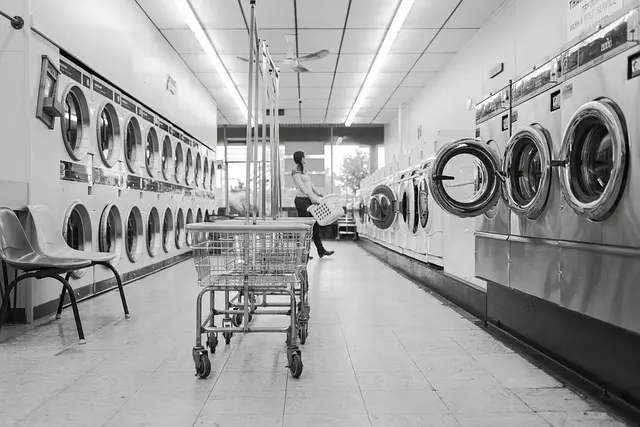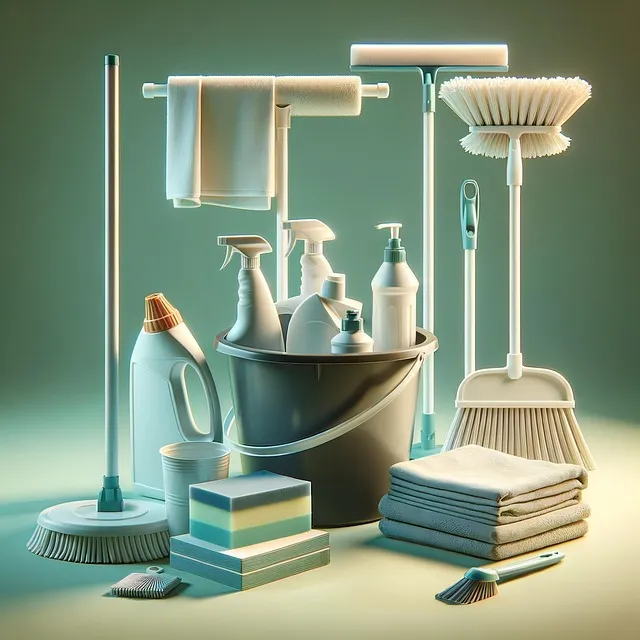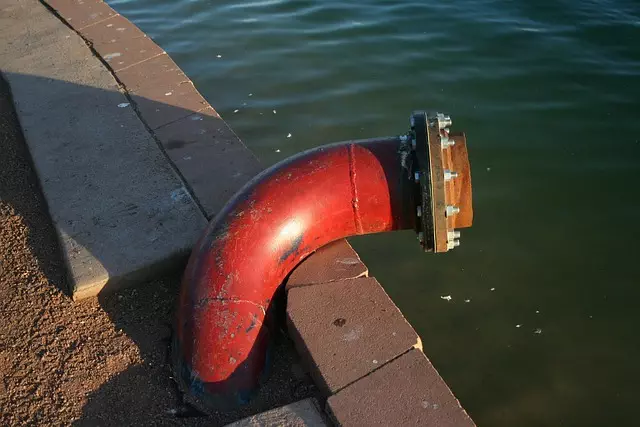Clogged drains, caused by debris like grease, food, and hair, are a common household issue. Kitchens and bathrooms are particularly vulnerable. Regular cleaning prevents clogs, but severe cases require professional drain cleaning services to restore drainage and avoid plumbing issues. Different clog types demand distinct solutions, from manual removal to hydro-jetting. Using the right tools, like plungers, baking soda, vinegar, and chemical cleaners (used cautiously), can help. DIY methods are affordable, but for stubborn clogs, professionals with specialized equipment offer guaranteed relief. Regular maintenance, such as avoiding grease and hot water flushing, prevents future clogs. Safety is paramount when using chemicals, and proper ventilation is crucial. Steer clear of solid objects down the drain, relying on natural remedies or a drain snake instead. Success stories highlight professional cleaning's effectiveness in both residential and commercial settings.
Unclogged drains are essential for maintaining a functional and hygienic living space. This comprehensive guide delves into the world of drain cleaning, offering insights on understanding and addressing clogged drains effectively. From identifying solid vs. liquid obstructions to exploring DIY methods, chemical cleaners, professional services, and preventive tips, we equip you with knowledge to tackle clogs head-on. Discover effective strategies to keep your drains flowing smoothly without breaking a sweat.
Understanding Clogged Drains: Common Causes and Effects

Clogged drains are a common household issue that can lead to significant disruptions in daily routines. Understanding the causes and effects is essential for effective drain cleaning. The primary reason behind clogs varies from build-up of grease, food particles, hair, and other debris to tree roots intruding into pipes. These obstructions can occur in any drain, but kitchens and bathrooms are particularly susceptible due to the high volume of grease, soap scum, and personal care products that flow down the drains.
The effects of clogged drains range from slow drainage to complete blockages, leading to overflows and potential water damage. Regular cleaning practices such as using drain covers, avoiding pouring grease down the sink, and adhering to eco-friendly cleaning methods can help prevent clogs. However, when a drain becomes severely blocked, professional drain cleaning services become necessary to restore proper drainage and avoid more serious plumbing issues.
Identifying the Type of Drain Clog: Solid vs. Liquid Obstructions

When it comes to blocked drains, understanding the type of clog is the first step in effective drain cleaning. Clogs can be broadly categorized into two types: solid obstructions and liquid buildup. Solid clogs, such as grease, food scraps, or hair, often create a visible blockage that can be removed by hand tools like pliers or a hook, or with the help of a plunger. These solid items typically gather at bends or traps in the drainpipe, forming a physical barrier that prevents water flow.
On the other hand, liquid clogs are more insidious. They usually result from grease buildup, soap scum, or even tree roots infiltrating pipes. Unlike solid clogs, liquid obstructions aren’t immediately apparent and can be harder to detect until they’ve caused significant slowdowns or backups in your plumbing system. For these types of clogs, chemical drain cleaners or more advanced methods like hydro-jetting may be necessary to restore proper drainage.
Tools and Equipment for Effective Drain Cleaning

When it comes to effective drain cleaning, the right tools and equipment make all the difference. A plunger is a fundamental must-have for any DIY drain cleaning kit. It creates a seal around the drain, using air pressure to force water and debris out. Plungers come in various types, from cup-style to bell-shaped, each designed for different drains and clogs.
For more stubborn clogs, a drain snake or auger is essential. This flexible metal cable is inserted into the drain and turned to break up and dislodge obstructions. Power drills with special attachments can also be effective, especially for deep or hard-to-reach drains. Additionally, chemical drain cleaners can provide quick relief, but they should be used cautiously due to their corrosive nature. Always prioritize safety and follow instructions carefully when using any chemicals.
DIY Drain Unclogging Methods: A Step-by-Step Guide

Unclogging a drain yourself can be a straightforward, cost-effective solution to a stubborn clog. Before calling a professional, consider trying these DIY methods. Start by gathering your tools: a plunger (preferably with a cup-shaped head for better suction), baking soda and vinegar (a natural and effective cleaning agent), and hot water. First, pour 1/2 cup of baking soda down the drain followed by 1 cup of white vinegar. This combination will create a fizzing reaction that can help break up any grease or soap scum buildup. Next, quickly add a pot of boiling hot water to the mix. The heat from the water should further dissolve any clog-causing substances.
For especially stubborn clogs, repeat this process multiple times, allowing the drain to cool down slightly between attempts. After you’ve made several applications, use the plunger to forcefully push and pull up and down on the plunger’s handle. This action creates a strong suction force that can dislodge whatever is causing the clog. If the drain still won’t clear, consider using a drain snake or other mechanical tool designed for more stubborn clogs. Remember, regular maintenance like cleaning drain traps with hot water and avoiding pouring grease down the sink can prevent future clogs and keep your pipes running smoothly.
Chemical Drain Cleaners: Safety Precautions and Application Tips

Chemical drain cleaners are a popular option for tackling stubborn clogs, but they require careful handling due to their potent nature. Before using any chemical solution, ensure proper ventilation in your bathroom or kitchen to minimize exposure to fumes. Always read and follow the instructions provided by the manufacturer. These products often contain strong acids or bases that can cause skin irritation or even damage if splashed. Wear protective gloves and eye wear for added safety.
When applying a chemical drain cleaner, start by pouring half the bottle down the blocked drain. Wait the recommended time as per the product’s instructions, usually a few minutes. Then, flush the drain with hot water to wash away any residue. For particularly severe clogs, repeat the process, but be mindful of using these products sparingly. Overuse can damage pipes and create more harm than good in the long run. Always dispose of unused cleaner according to local regulations to prevent environmental contamination.
Professional Drain Cleaning Services: When to Consider Hiring Experts

Many homeowners attempt DIY drain cleaning methods, but there are times when professional intervention is necessary. Clogged drains can be persistent and complex, especially in older plumbing systems or those with unusual obstructions. This is where professional drain cleaning services come into play. Experts have access to specialized equipment like hydrojet machines that use high-pressure water jets to clear clogs efficiently.
Hiring professionals is beneficial for hard-to-reach drains, severe blockages, or recurring drain issues. They can also identify and fix underlying problems, ensuring long-lasting solutions. Additionally, professional cleaners often provide guaranteed services, offering peace of mind that your drains will remain unclogged.
Preventive Measures: Maintenance Tips for Healthy Drains

Regular maintenance is key to preventing clogged drains. Start by avoiding pouring grease, coffee grounds, or large food particles down the sink. These substances solidify in cold water and can form blockages over time. Instead, use hot water to flush out any leftover food debris after cooking.
Consider using drain covers or catchers to trap hair and other small objects before they enter the drain. Also, periodically clean your drains with a mixture of baking soda and vinegar. This natural cleaner is effective in breaking up clogs without harmful chemicals. Regular deep cleaning and maintenance will keep your drains flowing smoothly, reducing the need for frequent drain cleaning services.
Common Mistakes to Avoid During Drain Cleaning

When tackling drain cleaning, it’s easy to fall into common traps that can hamper your efforts or even cause further damage. One major mistake is using chemical cleaners without proper ventilation, which can release harmful fumes. Always open windows and use protective gear when handling these products. Another frequent error is attempting to flush solid objects down the drain, thinking they’ll break up. This can lead to clogs deepening, as items like grease, coffee grounds, or even certain foods don’t dissolve easily.
Additionally, avoid using hot water alone to unclog drains, as it may push debris further down the pipes without removing the underlying cause. Instead, opt for a combination of natural solutions like baking soda and vinegar or invest in a good drain snake. Never forget that patience is key; rushing the process can result in bent pipes or damaged plumbing. Regular maintenance and avoiding these mistakes will keep your drains flowing smoothly.
Case Studies: Successful Drain Unclogging Stories

In the realm of drain cleaning, there’s no substitute for real-world success stories. Consider the case of a bustling family home where clogs were a frequent nuisance. After trying conventional methods with little success, they turned to professional drain cleaning services. The experts employed advanced techniques, including hydro jetting and chemical solutions, to clear not just one but several severely clogged drains throughout the house. The result? A restored flow, eliminated odors, and peace of mind knowing their drainage system was in top condition.
Another scenario involves a small business facing a critical situation. Their commercial kitchen drain had become so blocked that it threatened to shut down operations during peak hours. Promptly calling in drain cleaning specialists, they were met with swift action. The technicians used a combination of mechanical and chemical methods, ensuring not just the immediate unclogging but also providing maintenance tips to prevent future clogs. This proactive approach saved the day for the business, keeping their kitchen running smoothly and minimizing disruption to daily operations.



